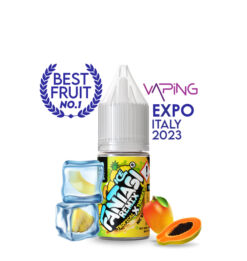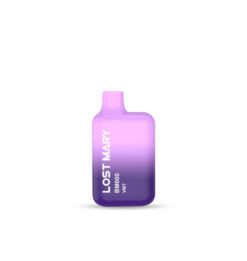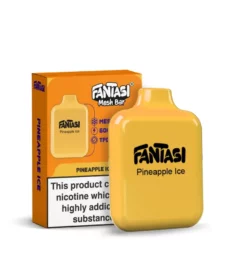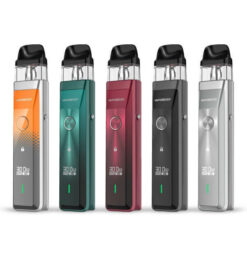We are all well aware of the dangers of passive smoking, but do the same risks exist with passive vaping? We put the two head to head in this post.
Facts on passive smoking
The dangers of passive smoking have been known for some time. The risks are especially great for children who breathe in second-hand smoke because of their less developed bodies.
When you smoke any kind of tobacco product, most of the noxious fumes don’t go into your lungs; they end up in the air around you. This, along with the smoke that is emitted from any lit tobacco product even when it isn’t being smoked (aka ‘sidestream’ smoke), causes a health hazard for anyone around.
In the 5,000 or so chemicals that are present in cigarette smoke, some 70 are cancer-causing. Those chemicals include:
- Benzene (a petrol additive)
- Arsenic (a poison)
- Formaldehyde (ironically, used to embalm the dead)
- Polonium-210 (a radioactive element)
- Benzo(a)pyrene (a DNA-damaging chemical)
Of course, all these are still present in second-hand smoke and have proven to cause illnesses in the children and adult non-smokers who are exposed.
In children, passive smoking can cause asthma, ear infections, pneumonia, bronchitis, and meningitis. It is also a cause of sudden infant death syndrome (SIDS).
Adults don’t fare any better with second-hand smoke causing nearly 34,000 heart disease deaths and 7,300 lung cancer deaths among adult non-smokers each year between 2005-2009 in the U.S. alone. These figures come from the Centres for Disease Control and Prevention (CDC). There is even an increased stroke risk and a higher chance of developing Chronic Obstructive Pulmonary Disease (COPD) for people exposed to passive smoking.
All in all, the CDC estimates that, since 1964, 2,500,000 non-smokers have died from passive smoking. This explains why many countries have banned smoking in enclosed public areas.
Facts on passive vaping
Using e-cigarettes, or ‘vaping’ as it’s commonly known, does not involve tobacco or the burning of any substances. Instead, a device is used to heat an e-liquid to create a vapour which is then inhaled. E-liquids are either supplied at a certain nicotine strength (in bottles no more than 10ml in the UK) or in larger bottles with ‘nicotine shots’ supplied, otherwise known as ‘shake and vape’. They typically contain only a handful of ingredients, usually just:
- Propylene glycol (the Food and Drug Administration (FDA) has classified propylene glycol as an additive that is “generally recognized as safe” for use in food. It is found in various edible items such as coffee-based drinks, liquid sweeteners, ice cream, whipped dairy products and soda)
- Vegetable glycerin (again, the FDA has classified vegetable glycerin as “generally recognized as safe” and is widely used in the food industry as a sweetener)
- Flavourings (food flavourings approved for human consumption. In the UK, many substances are banned as ingredients – see below for an extensive list)
- Nicotine (if chosen, is a highly addictive chemical produced by several plants in the nightshade family and also synthetically but is not cancer-causing or excessively harmful in itself)
According to the EU Tobacco Products Directive (TPD), the following substances are NOT permitted as ingredients in e-liquids:
- Any ingredient that poses a risk to human health in heated or unheated form
- Vitamins or other additives that create the impression that a tobacco product has a health benefit or presents reduced health risks
- Caffeine or taurine or other additives and stimulant compounds that are associated with energy and vitality
- Additives having colouring properties for emissions
- Additives that have carcinogenic, mutagenic or reprotoxic (CMR) properties in unburnt form.
From national standards:
- Substances classified as carcinogenic, mutagenic or reprotoxic (CMR categories 1 and 2)
- Substances classified with specific target organ toxicity for the respiratory tract (STOT category 1)
- Respiratory sensitizers
- Vitamins used as food supplements
- Stimulant additives such as caffeine or taurine
- Diacetyl
- Pentane 2,3 dione
- Diethylene glycol
- Ethylene glycol
- Formaldehyde
- Acetaldehyde
- Acrolein
- Metals, including cadmium, chromium, iron, lead, mercury and nickel
- Preservatives liable to release formaldehyde.
As well as the strict regulations on what ingredients can be used in e-liquids, because the vapour produced from e-cigarettes is not formed by burning tobacco, it does not contain the myriad of harmful chemicals found in tobacco smoke. As such, this means that the risk of passive vaping is negligible.
According to the NHS:
“Smoking e-cigarettes, also known as vaping, doesn’t produce tobacco smoke so the risks of passive smoking with conventional cigarettes don’t apply to e-cigs.”
It goes on to say that although e-cigarettes do release trace amounts of nicotine into the atmosphere, they are not at levels which pose any threat.
Cancer Research UK says:
“So far, there have been no identified risks of passive vaping for people around them.”
In Public Health England’s (PHE) latest 2018 evidence review on e-cigarettes:
“To date, there have been no identified health risks of passive vaping to bystanders.”
To further prove that official bodies do not see passive vaping as a credible threat, the UK government does not plan to bad vaping indoors in England and leaves the policy on vaping in the workplace for individual employers to decide. For the sake of prudent safety, some health professionals don’t recommend vaping around pregnant women, young children or babies, which is a reasonable suggestion.
There is some talk of a possible risk of diacetyl being released when someone is vaping. However, as mentioned earlier, diacetyl has been banned under the EU TPD as an ingredient in e-cigarettes and e-liquids in the UK since 2016, so this doesn’t apply here. Nevertheless, we do recommend always purchasing your e-liquids from reputable and quality sources, such as Vapoholic, that are registered with the UK’s Medicines and Healthcare products Regulatory Agency (MHRA) and manufacture TPD compliant juices.
In conclusion, the risk of passive vaping is, for all intents and purposes, non-existent based on current evidence, and it is certainly not in the same league as passive smoking.
For a full and unbiased view on vaping and it’s effects on health, check out our Vaping Health Facts guide.
Do you think the same bans on smoking in enclosed public places should apply to vaping? Start the discussion in the comments below.
Sign up to the Vapoholic newsletter below and receive our latest deals, flash sales, new e liquid flavour releases and up to date vape culture and vape industry news delivered straight to your inbox. You’ll also receive 10% off your next order!
Vapoholic.co.uk – THE place to come for the best UK e liquid deals and vape news.
[starbox]








